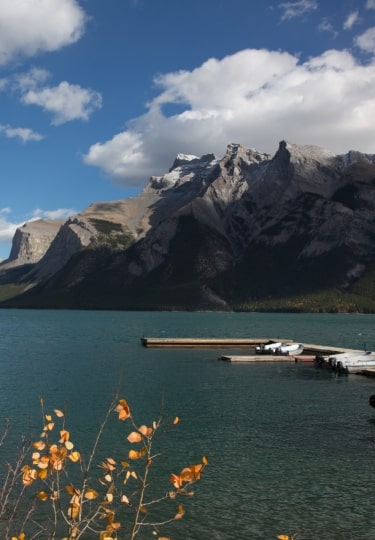Nature is most often at its best where water meets land, or forest meets mountain. Those contrasts play a key part of defining the 20 most beautiful lakes in the world.
A clear stretch of water reflecting the mountains, and forest around it makes for an idyllic picture. Make it somewhere remote, far from the city, and you have somewhere special.
From Alaska to New Zealand, you can find these special places beloved of everyone who can find them. Their placidity and beauty brings a calming peace to us all who look upon them.
Here are 20 of the most beautiful lakes in the world.
Kenai Lake, Alaska
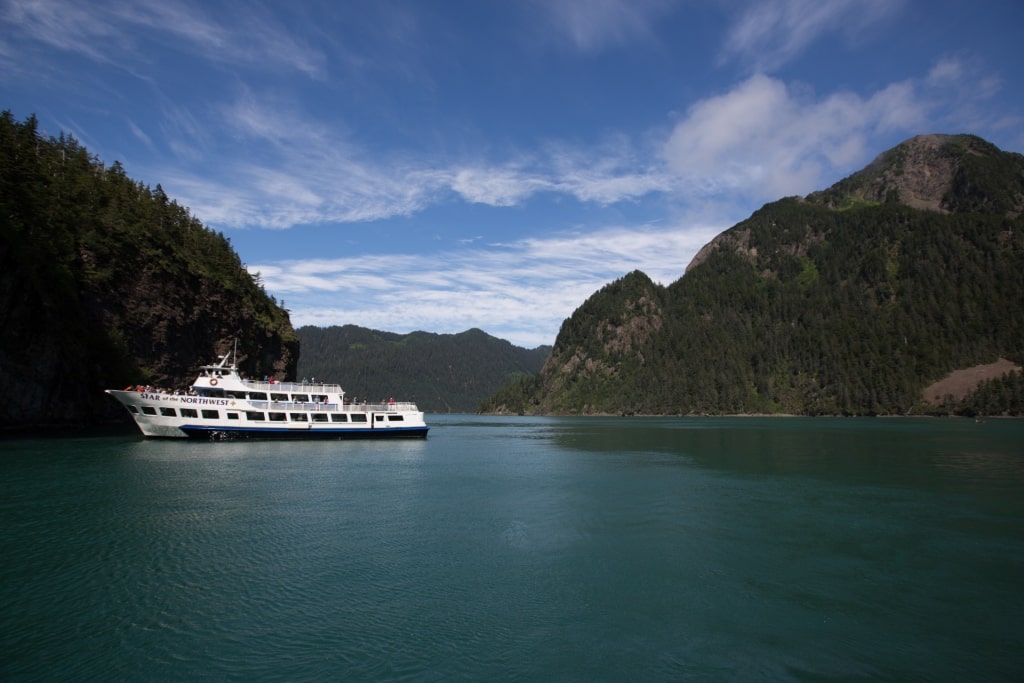
Kenai Lake, Alaska
With its turquoise water reflecting the mountains beyond, Kenai Lake is the kind of majestic sight you come to Alaska to see. However, its most southern part is skirted by Alaska’s Route 9, making it only 30 minutes from the port of Seward.
The 20-mile-long Alaskan lake has shores lined with thick green forest. Explore by hiking, kayak or canoe, and you might see bald eagles, bears, moose and other wildlife.
The lake’s distinctive blue color comes from suspended rock dust, the result of glacial erosion. Learn more about glaciers on a tour of Kenai Fjords National Park.
Lake Minnewanka, Banff, Canada
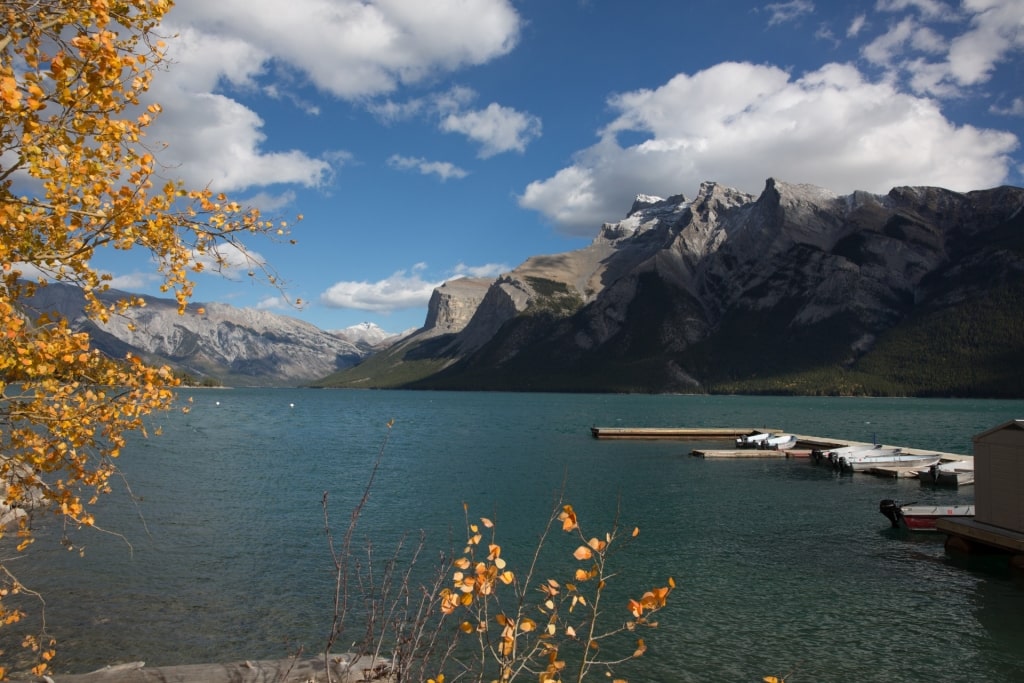
Lake Minnewanka in Banff, Canada
Only ten minutes away from Banff, Lake Minnewanka is in the heart of Banff National Park. It’s a popular place to hike, or enjoy a boat ride but big enough (at 13 miles long) to find solitude.
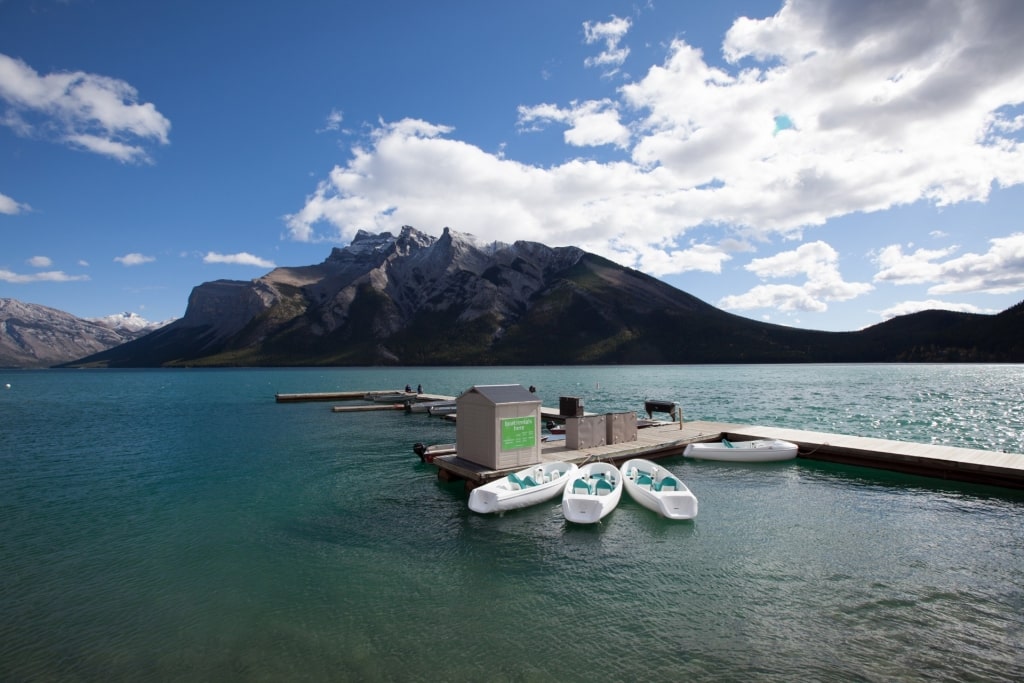
Lake Minnewanka in Banff, Canada
While enjoying its calm beauty, you’ll perhaps understand why its name means “Water of the Spirits” in Nakoda. Reflected in the water, you’ll see the high peaks of the Canadian Rockies, some of the most beautiful mountains in the world.
The forest around the lake is home to wildlife, such as deer, bears, and elk, as well as many bird species. Take to the water in a kayak, canoe, or organized cruise to best see them.
Bacalar Lagoon, Mexico
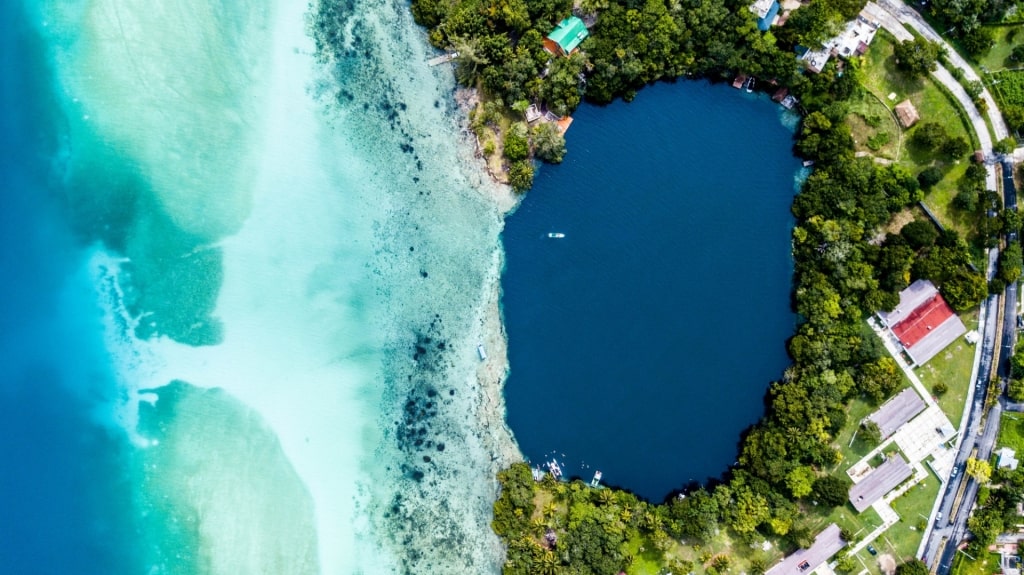
Bacalar Lagoon, Mexico
Near Costa Maya, Bacalar is better known as the “Lagoon of Seven Colors” from the many blue-green shades in its waters. These are caused by light reflecting off the differing depths of its limestone bottom.
The color palette is extended by the green vegetation around the lake, its sandy white beaches, and the blue Quintana Roo skies. The whole is a photographer’s dream, making for one of the world’s most beautiful lakes.
The lagoon is 30 miles long, so there’s plenty of space to find solitude. Aside from being one of the most beautiful places in Mexico, swimming, kayaking, birdwatching, or simply enjoying the peace are all popular ways to take in its beauty.
Gatun Lake, Panama
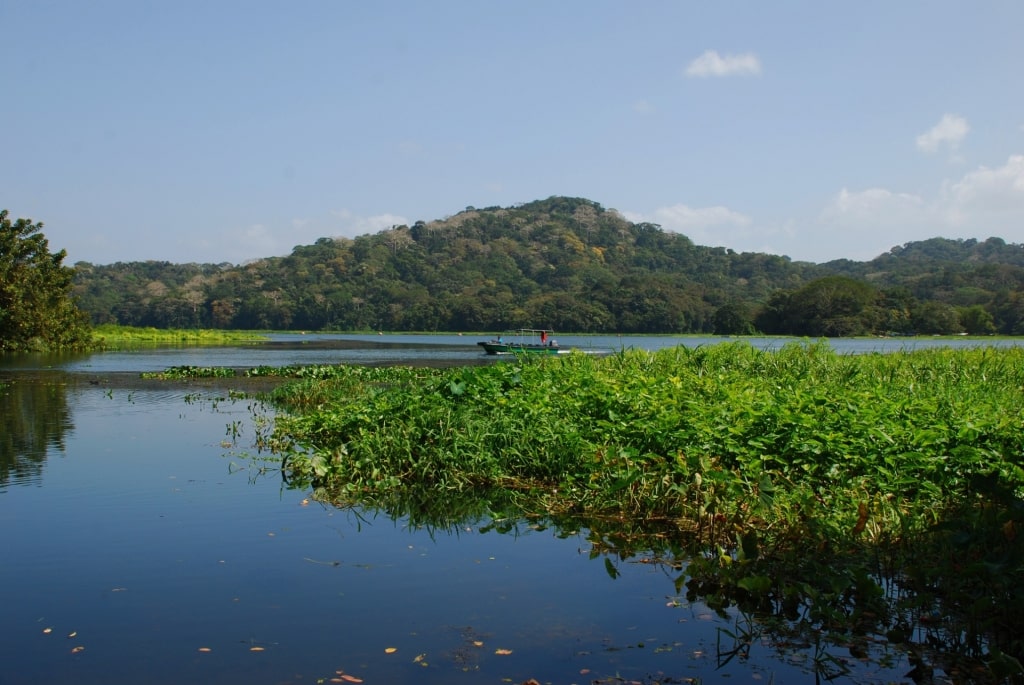
Gatun Lake, Panama
Those who have discovered Panama often say it compares to Costa Rica for its natural wonders. Around Gatun Lake, part of the Panama Canal, you can see why.
The canal itself depends on its water table, so the forest on each side is preserved in a massive national park. The 22-mile-long lake, and its surrounding vegetation, plays a key role in protecting many native Central American animal, fish, bird, and plant species.
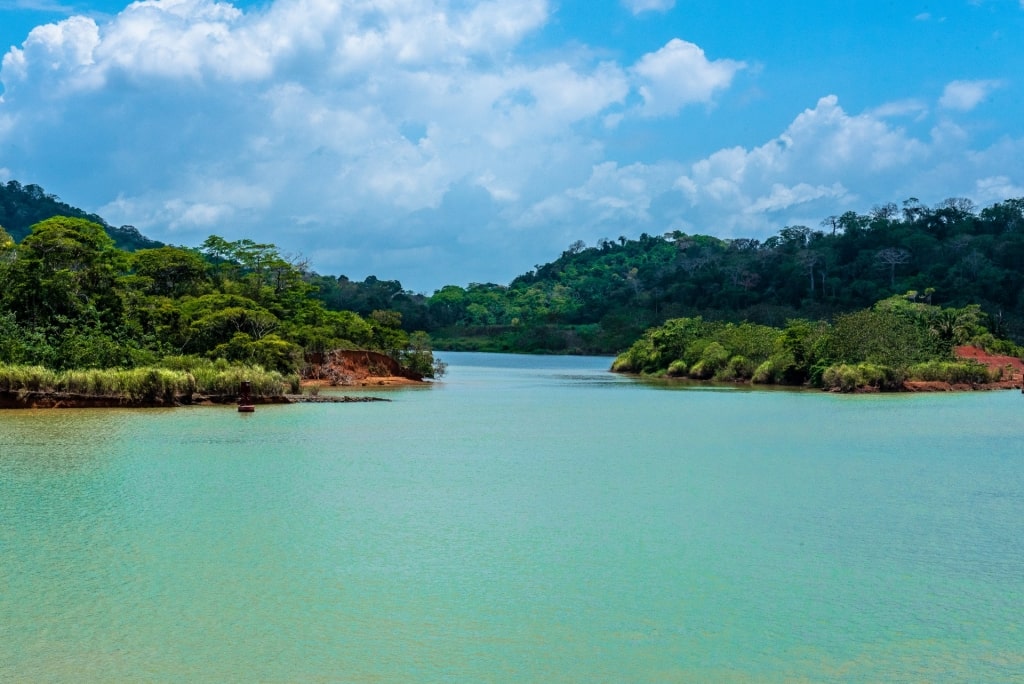
Gatun Lake, Panama
There are several great spots for panoramic views of Gatun. While many massive container ships in the midst of their canal transit dot its vast waters, their scale is dwarfed by the grandeur of nature.
Read: Tips for Visiting the Panama Canal
Lake Llanquihue, Chile
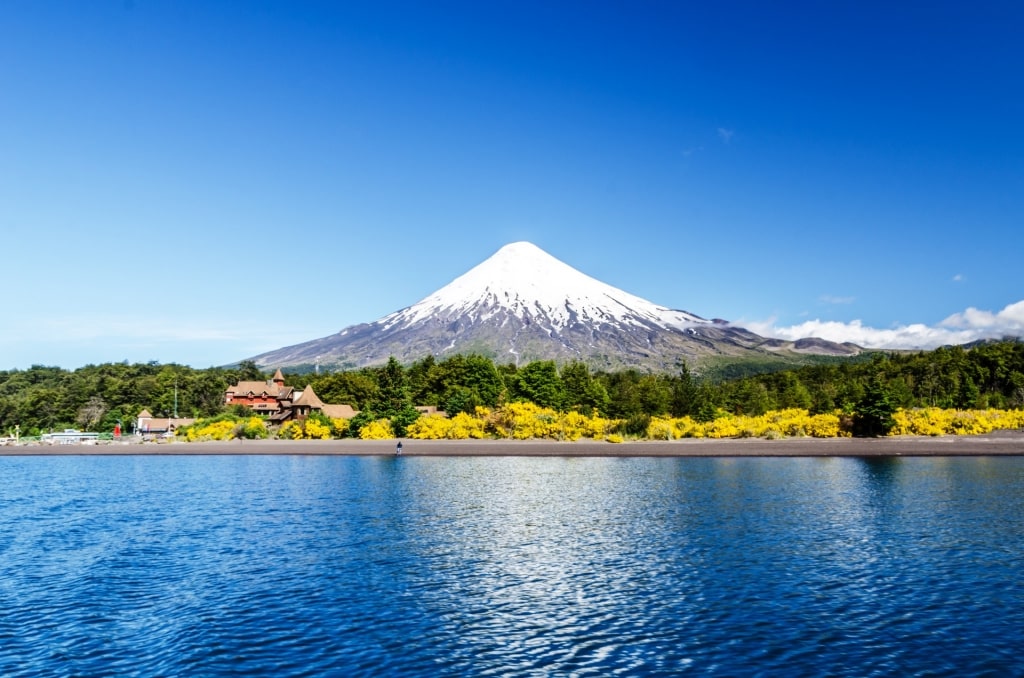
Lake Llanquihue, Chile
Lake Llanquihue makes regular appearances in photos of Chilean Patagonia. The snow-tipped cone of Volcán Osorno is reflected in the water in many of them.
The second-largest lake in Chile, Llanquihue covers about 300 square miles. A cruise here is a wonderful way to admire the volcano from the water.
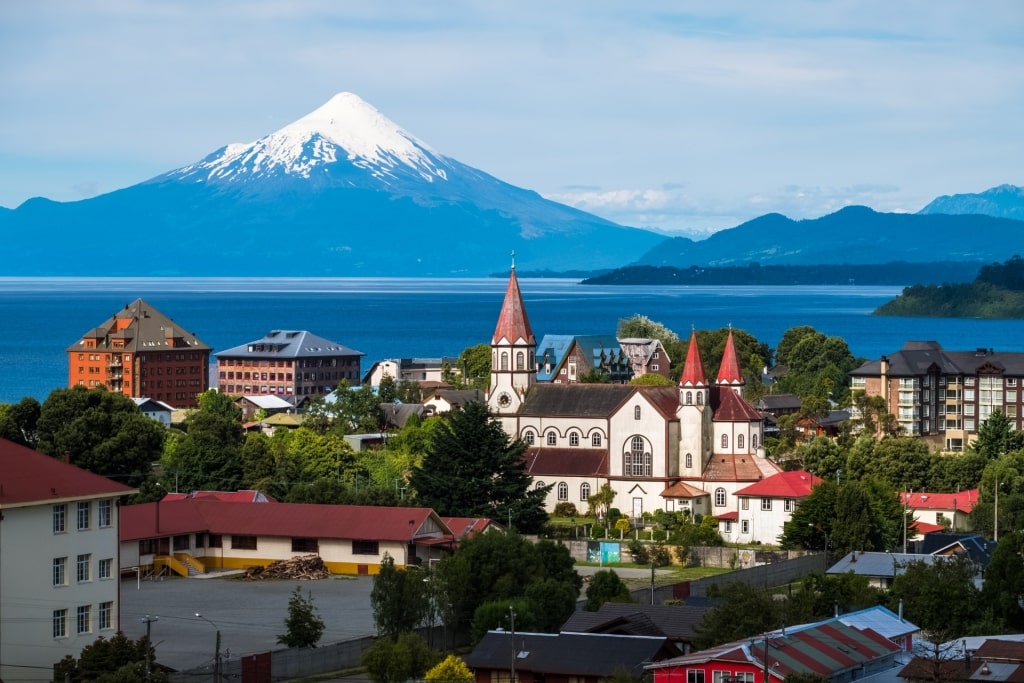
Puerto Varas, Chile
Towns such as Puerto Varas and Frutilla are also popular bases for fishing, boating, and hiking in Chile. Their German-style architecture forms another contrast to the lake’s calm water much beloved of photographers.
Escondido Lake, Argentina
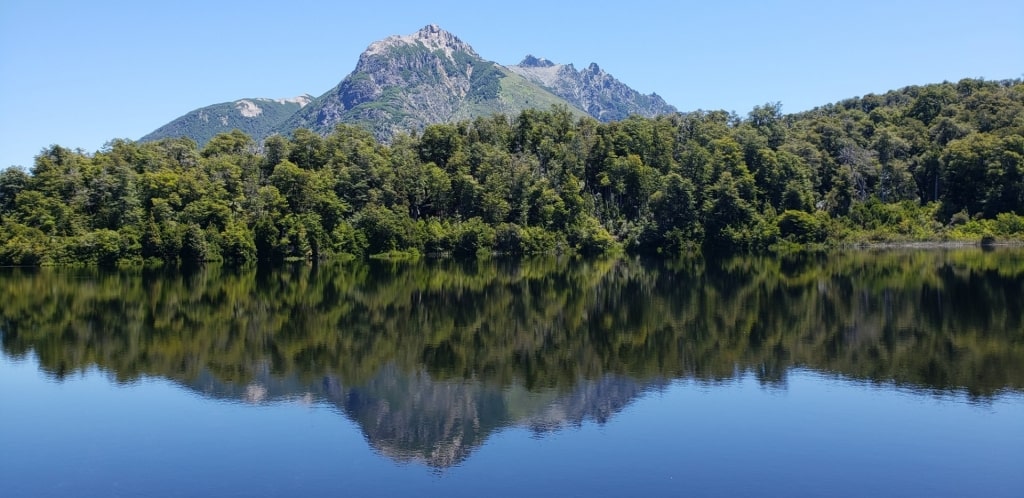
Escondido Lake, Argentina
Escondido is in Argentina’s Patagonia, on the island of Tierra del Fuego. Its name means “Hidden”, but, although secluded, the lake is still under an hour from Ushuaia.
The long, thin reach of water is hemmed in on each side by mountains. The valley holding the lake is rich with multi-colored peat moss, and tree cover.
Escondido is popular with fisherfolk, who use a fly or spinners to try for brown and rainbow trout. The crystal-clear turquoise water is a perfect mirror for the peaks of the Andes.
Lovatnet Lake, Norway
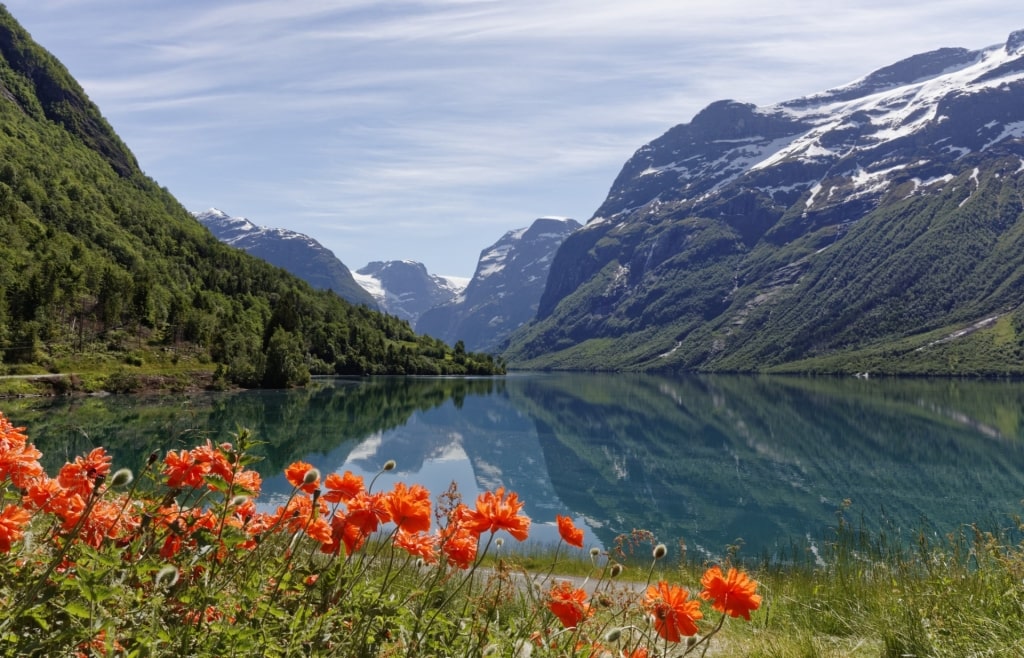
Lovatnet Lake, Norway
Norway has no shortage of dramatic scenery, but Lovatnet stands out for its lovely emerald green color. Steep cliffs block the wind to create a surface that is often mirror-smooth.
Snow-capped mountains and cascades plunging off the rocks add to the beauty of Lovatnet’s setting. Boat trips or kayak tours are great ways to see the best viewing points.
Guides will bring to life the people and history of this rugged landscape. The Norwegian lake is even said to be home to a mythical sea serpent, although you are more likely to see salmon, or trout.
Lake Mývatn, Iceland

Lake Mývatn, Iceland
The country’s rough black volcanic landscape is a wonderful contrast to the flat waters of Lake Mývatn, one of the most beautiful places in Iceland. Sitting amid bubbling mud pools, steaming vents, hot pools, and misty waterfalls, it’s an oasis of calm.
That volcanic warmth does make it a literal oasis for a diverse range of flora and fauna, with more than 115 species of water birds to be seen. The wetlands around are a prized habitat for many other plant, and animal species, including the Arctic fox.
No wonder it is a place of legend in Iceland. Tall tales of trolls and elves don’t seem too outrageous when you see this haunting landscape.
Loch Ness, Scotland
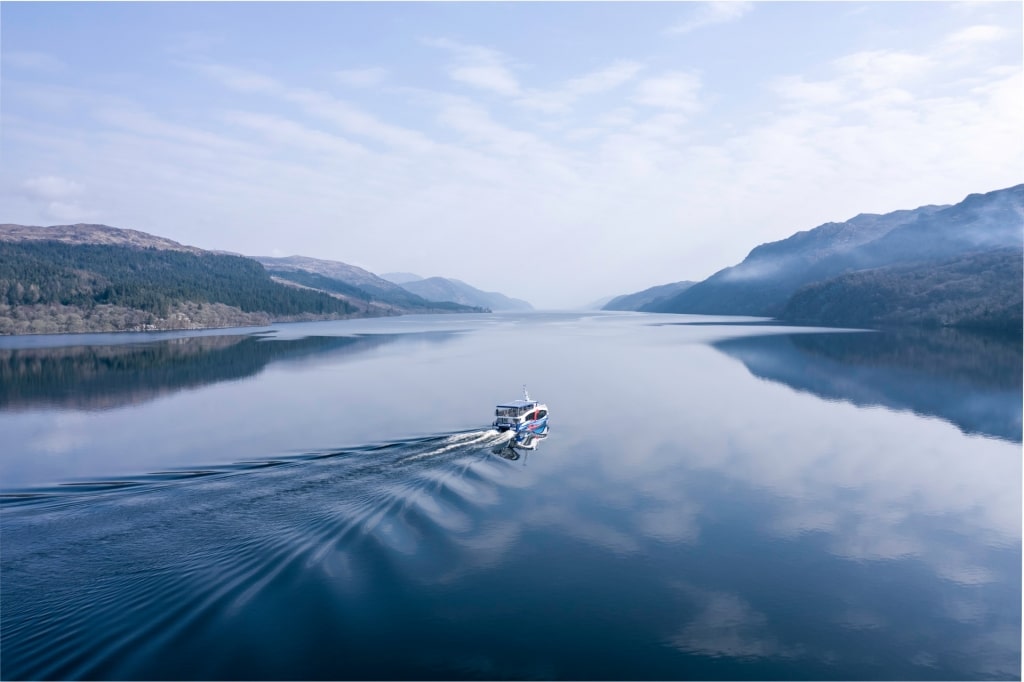
Loch Ness, Scotland
Loch Ness in Scotland is world famous as the home of “Nessie”, the elusive monster said to haunt its depths. When you first see this vast highland lake, you can understand how such a beast might remain hidden.
Of course, very few people have ever spotted Nessie. On the other hand, most visitors see something strange amid the sudden mists and odd water currents.
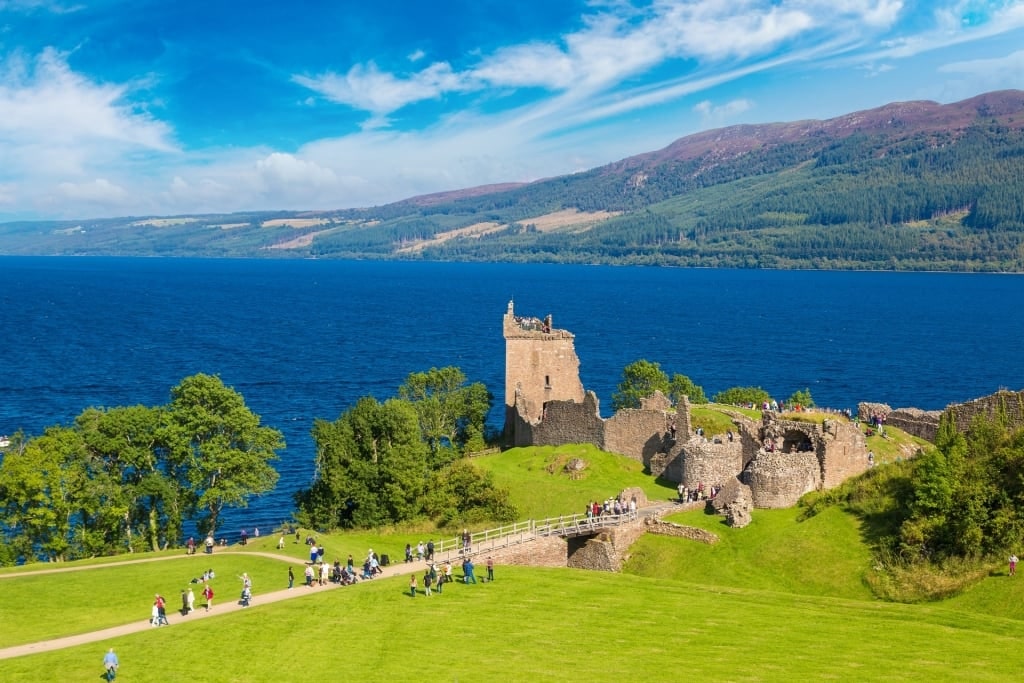
Urquhart Castle, Scotland
The memory most of us come away with, however, is the beauty of this wonderful place. High mountains and thick forests will suddenly give way to the view of distant Urquhart Castle to create a wild, romantic vision.
Lake Tolla, Corsica, France
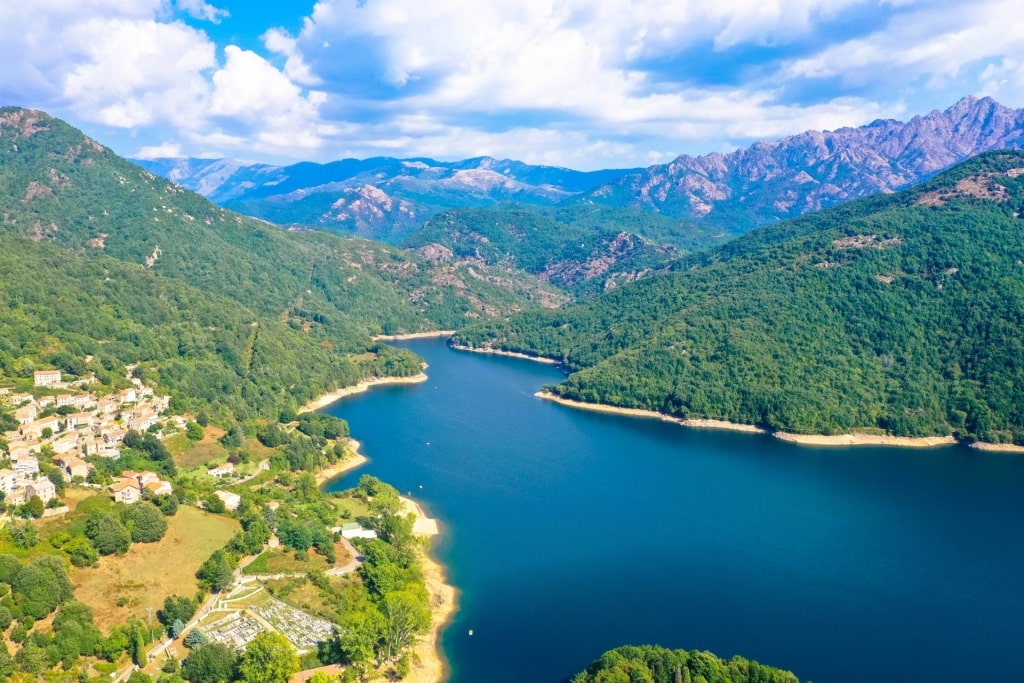
Lake Tolla in Corsica, France
The largest lake on the beautiful Mediterranean island of Corsica, Lake Tolla is a magnet for hikers, anglers, and boaters. Part of its appeal is the drive up from the coast, on scenic roads winding through Corsica’s wild interior.
The lake’s clear waters are home to many fish species, including pike and trout. You can enjoy them on the table in quiet villages nearby, such as Bastelica and Tolla.
One of the best things to do in Corsica is to enjoy a pedal-boat ride on the lake. One alternative is to hike in the forests, where you might see signs of wild boar.
Minnewater, Bruges, Belgium
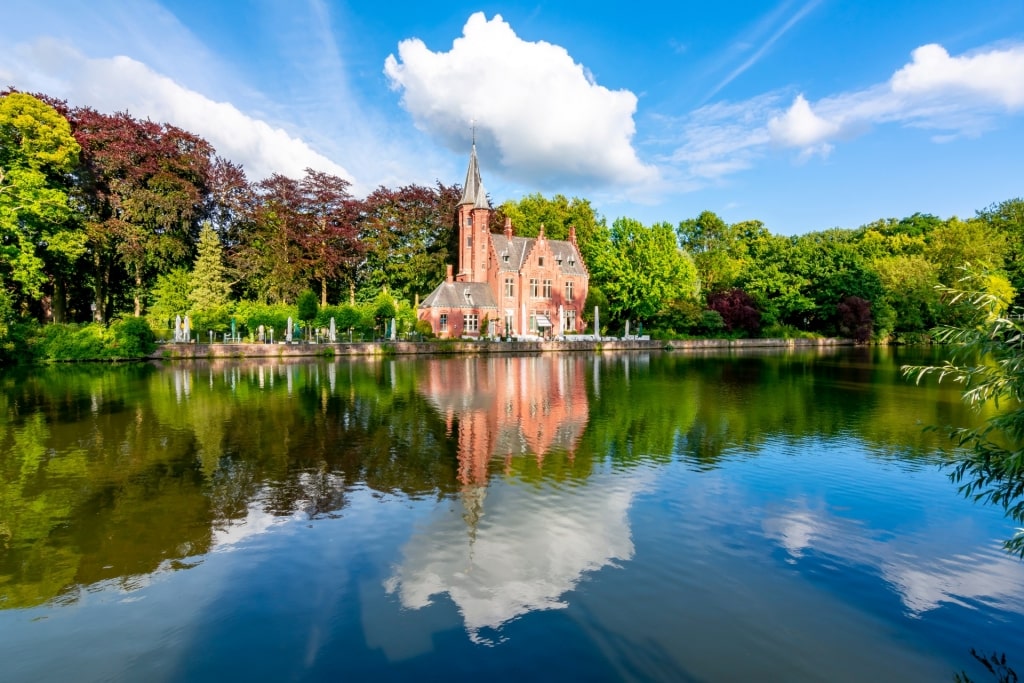
Minnewater in Bruges, Belgium
Minnewater is firmly an urban lake. However, that urban setting is the beautiful city of Bruges, where art and architecture add their own appeal.
Minnewater is known as the “Lake of Love” for its story of a tragic romance. Local guides will tell the story, but the take-away is that walking over the lake’s bridge with your partner promises eternal love.
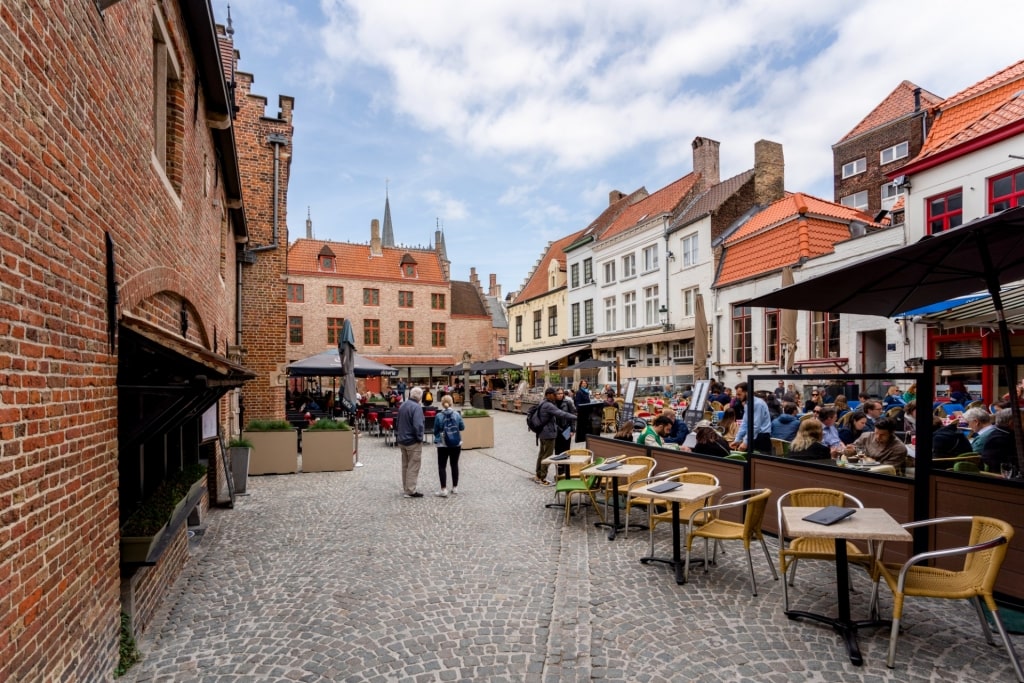
Bruges, Belgium
Bruges is the most perfect of European cities, with its cobbled streets, medieval buildings, and pretty bridges. In Minnewater, you have a serene place at its heart to take it all in.
Read: Best Things to Do in Bruges
Lake Garda, Italy
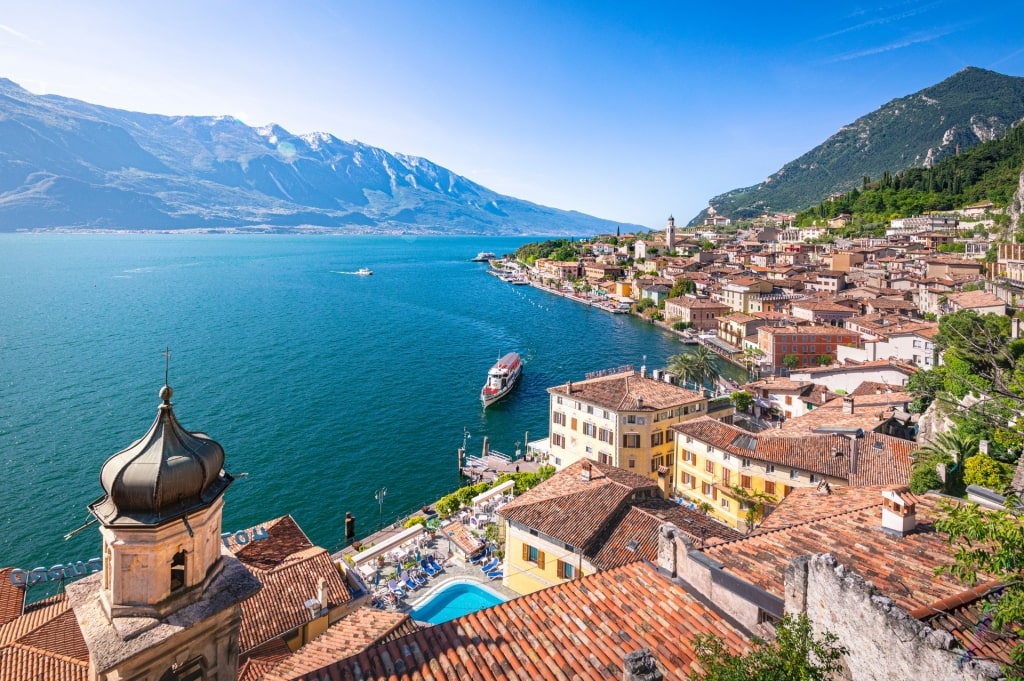
Lake Garda, Italy
Lake Garda is no stranger to any collection of the world’s most beautiful lakes. The largest lake in Italy, it has been famed for its charms since the days of the “Grand Tour” undertaken by young aristocrats up to the early 19th century.
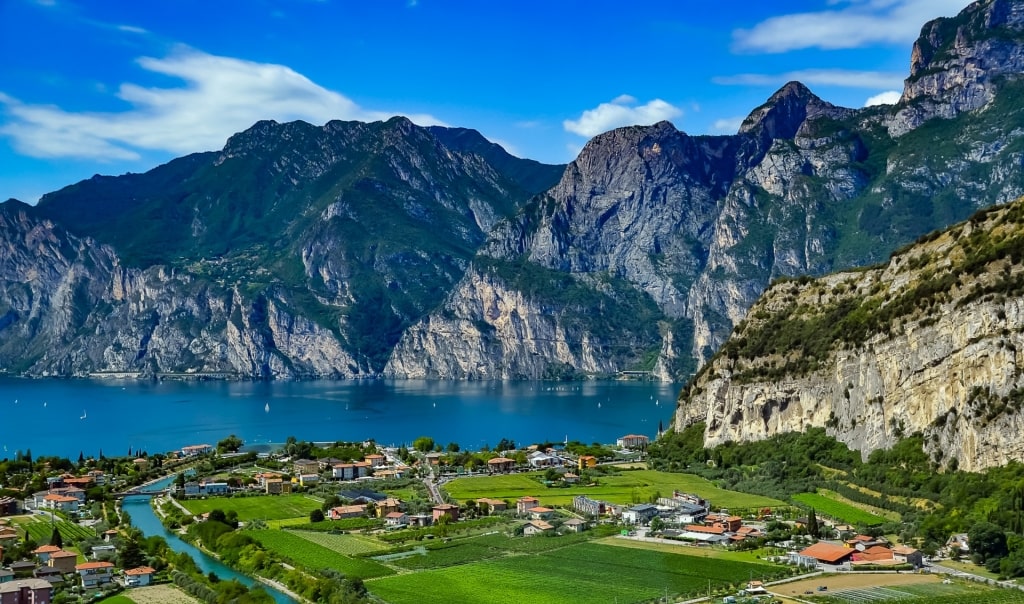
Lake Garda, Italy
Sitting within the fringes of the Italian Alps, the lake is best appreciated from their slopes. As one of the most stunning natural wonders in Italy, it’s a view that has inspired writers, poets, and artists for generations.
Not the least of its attractions are the many small towns and villages on its lemon-fragranced shores. These add Italian cuisine, and fine wines, to the scenic setting, and mild climate.
Plitvice Lakes, Croatia
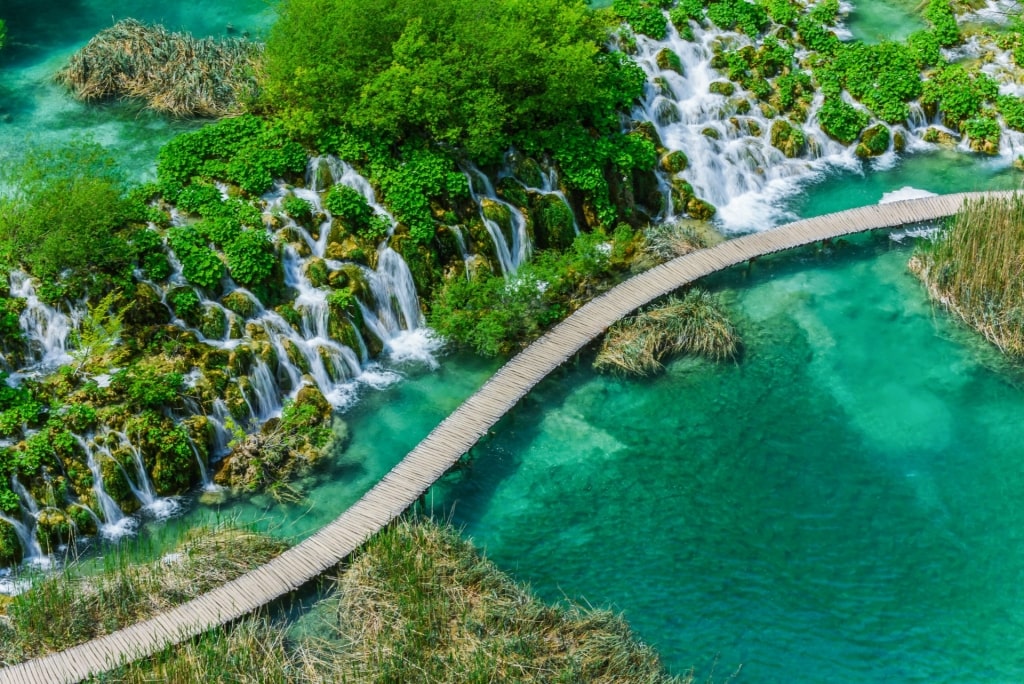
Plitvice Lakes, Croatia
Plitvice Lakes National Park in Croatia is a UNESCO World Heritage Site, recognized for its natural beauty.
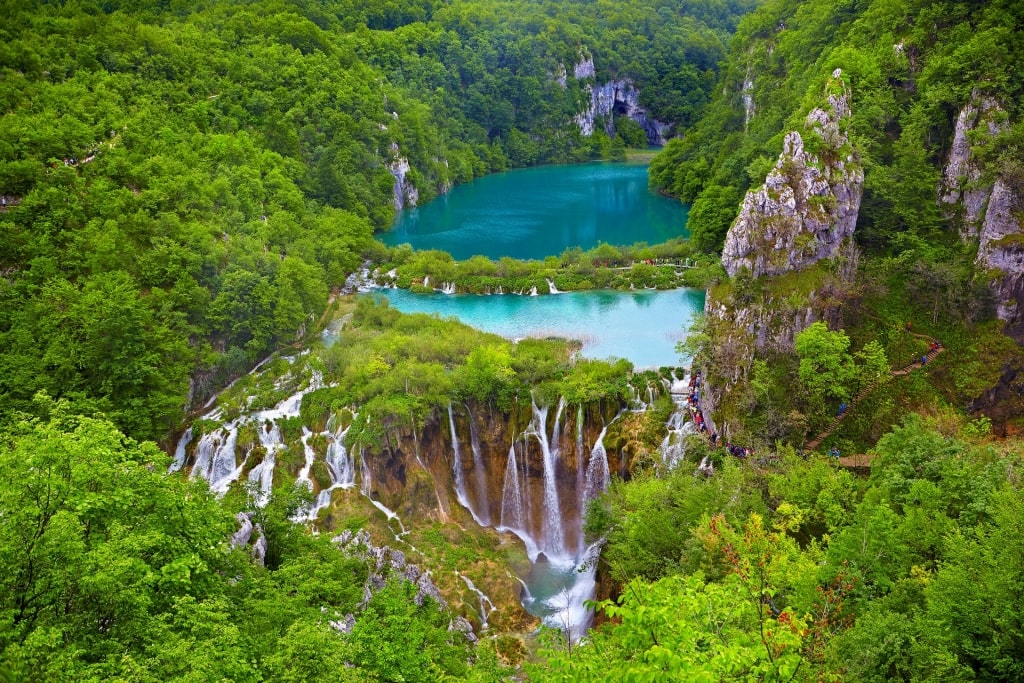
Plitvice Lakes, Croatia
The varying depths of the rock pools and the many lakes produce an equal variation in water color. Ranging from bright turquoise to deep blue-green, this mix is augmented by a wealth of vegetation.
There are more than 1,200 different plant species, as well as several endangered animal species in the park. These include bears, wolves, and even a handful of lynx.
Skadar Lake, Montenegro
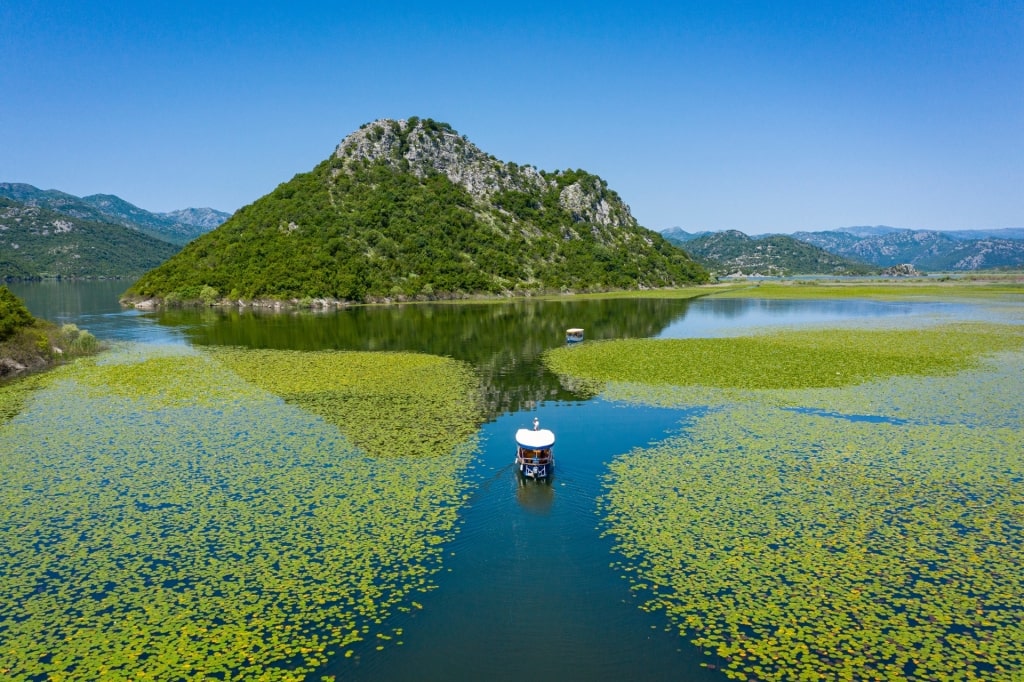
Skadar Lake, Montenegro
The largest freshwater lake in the Balkans, Skadar Lake is known for its natural beauty, diverse wildlife, and cultural significance. Its clear water, surrounding hills and forest host 280 bird species (90 percent of them migratory), and several unique fish species.
A boat tour is the best way to see the lake and its several small islands while in Montenegro. Grmožur Island is a popular landing spot for swimmers and picnickers.
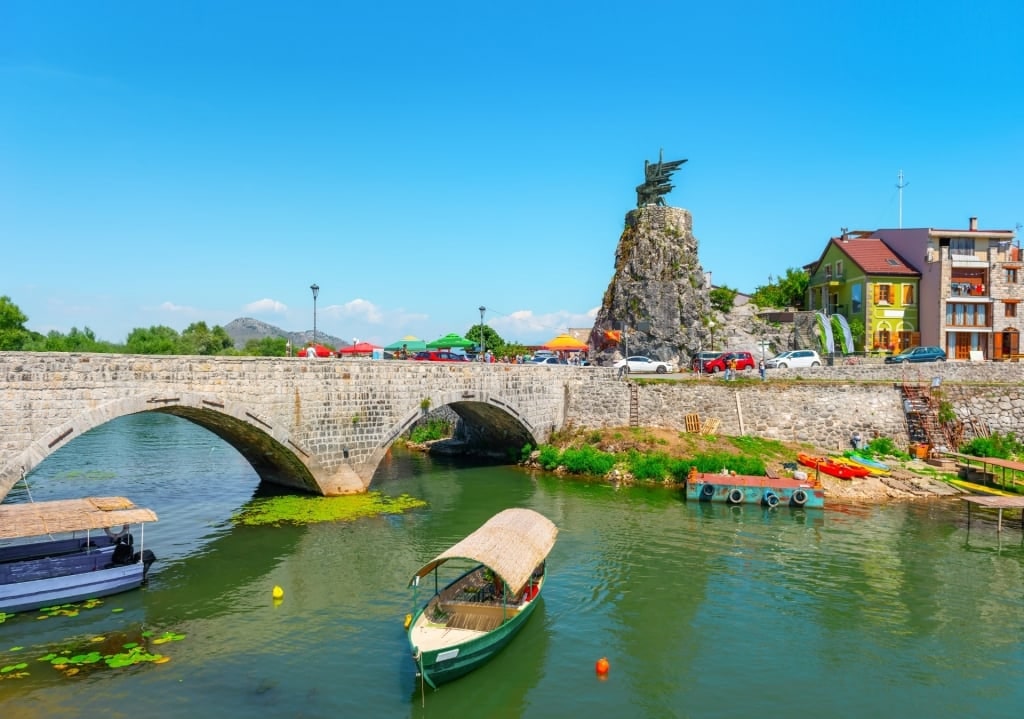
Virpazar, Montenegro
The old town of Virpazar on the lakeshore has historic buildings, museums, and art galleries. It’s a good base for walkers, cyclists, and anglers enjoying the area.
Lake Kournas, Crete
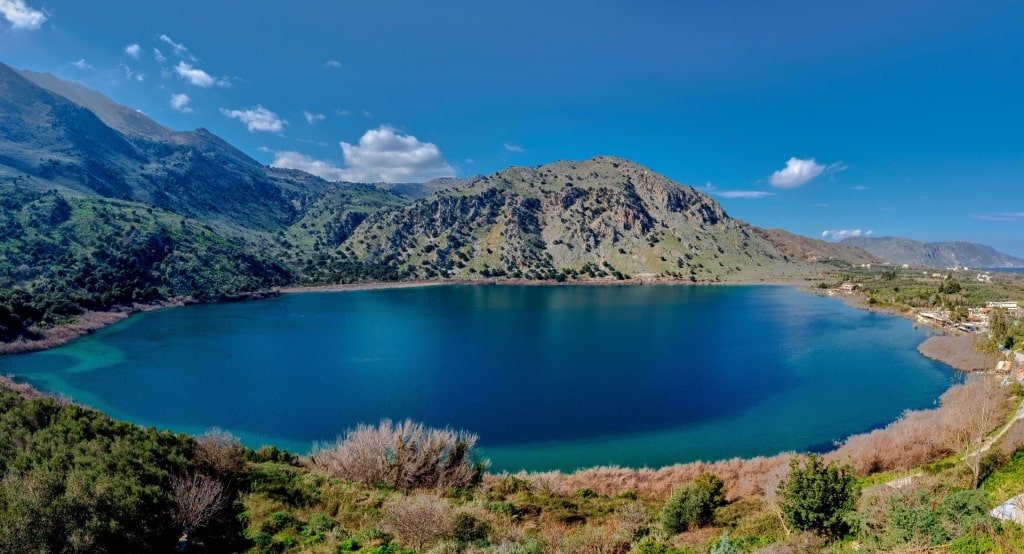
Lake Kournas, Crete
This large freshwater lake—the only one in Crete—is known for its natural beauty and quiet setting. Its aquamarine water changes color during the day as the sun moves across the sky.
The lake is an important bird sanctuary, alive with ducks, geese, herons, and moorhens. There is also a rare species of turtle to spot in the rich wetland environment.
In summer, lower water levels reveal a three-mile-long ring of white sand beach, great for sunbathing, and swimming. In winter, renting pedal boats or kayaks is the most popular activity.
Lagoa do Fogo, Azores, Portugal
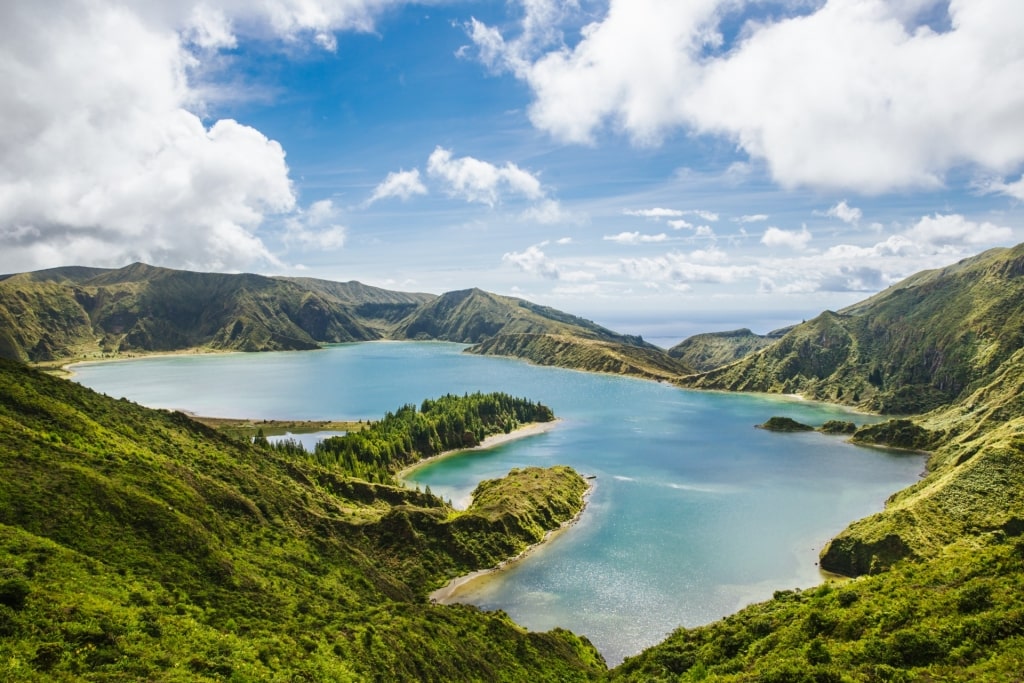
Lagoa do Fogo in Azores, Portugal
The “Lake of Fire” was born from a volcanic eruption, sitting within the caldera of Água de Pau Massif near Ponta Delgada on the island of São Miguel.
The surrounding rock has several viewpoints to take in its turquoise water, hemmed in by black rock and bright green vegetation.
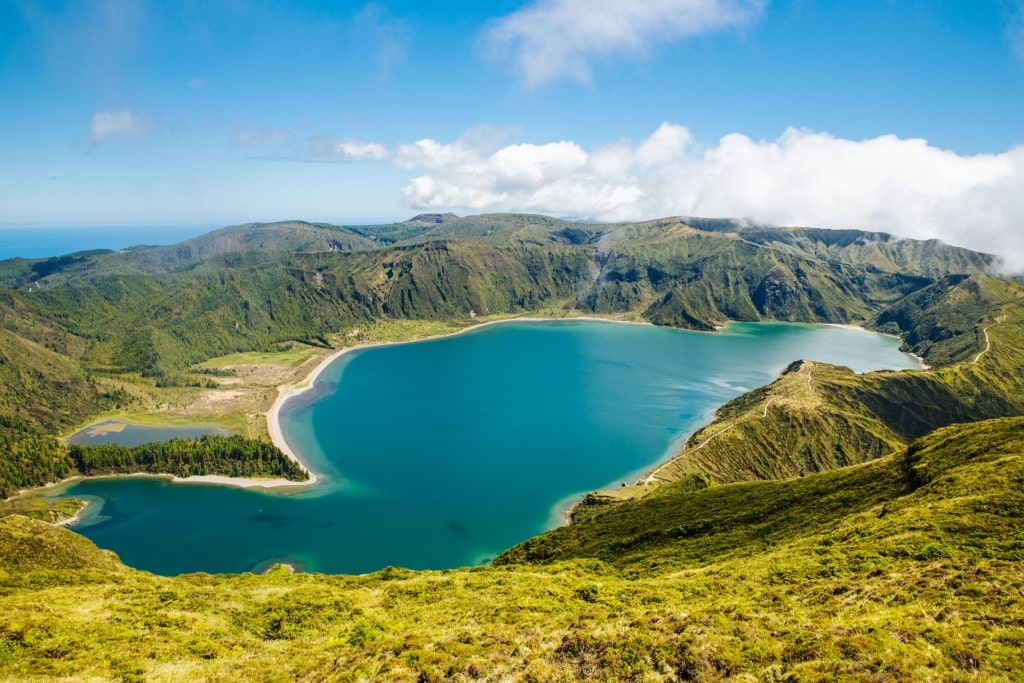
Lagoa do Fogo in Azores, Portugal
There are various hikes to explore the lakeshore, varying in time from an hour to all day. The descent over rough volcanic rock calls for good shoes, however.
You can swim or kayak in the lake, or explore the mountains around it. The Azores is known for its ecological diversity, and Lagoa do Fogo is a special place for unusual flora, and fauna.
Dead Sea, Israel
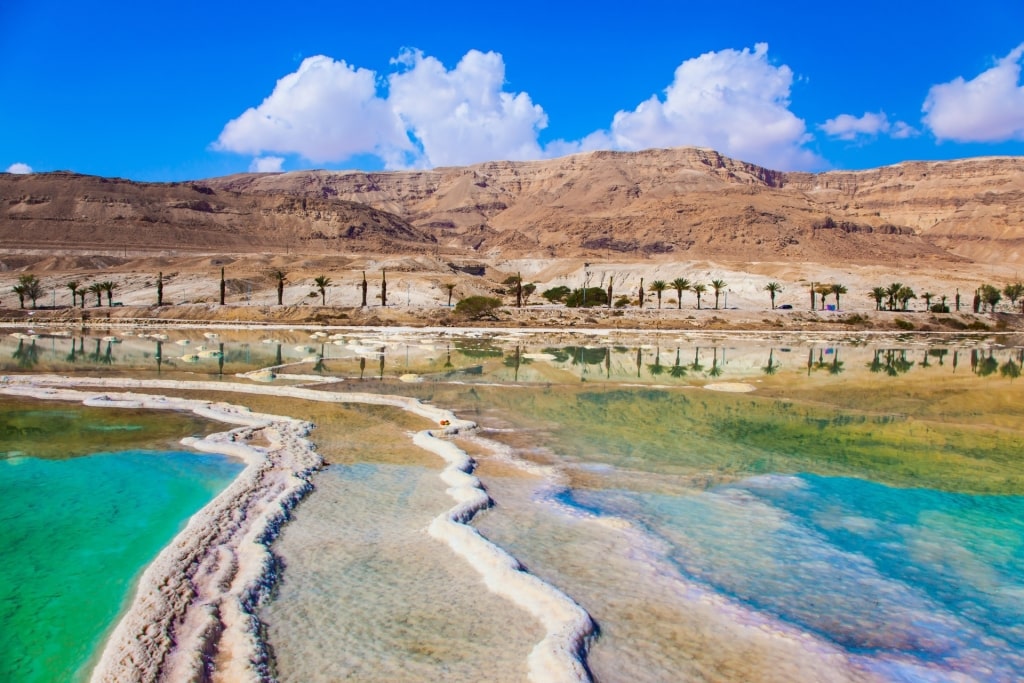
Dead Sea, Israel
Like the Caspian, Aral, and Salton seas, the Dead Sea is actually a lake, with water that is almost ten times saltier than any seawater. Enter the water and you’ll float.
At 1,400 feet below sea level, the lake is the lowest point on the earth’s surface. Sitting between Israel and Jordan in the Jordan Rift Valley, it is also one of the world’s most beautiful sights.
The salt formations along the shore and in the water create unusual patterns that are a natural wonder. Towards sunset, the calm turquoise water looks its best, but the surrounding desert landscape is enchanting at any time of day.
Lake Ashi, Japan
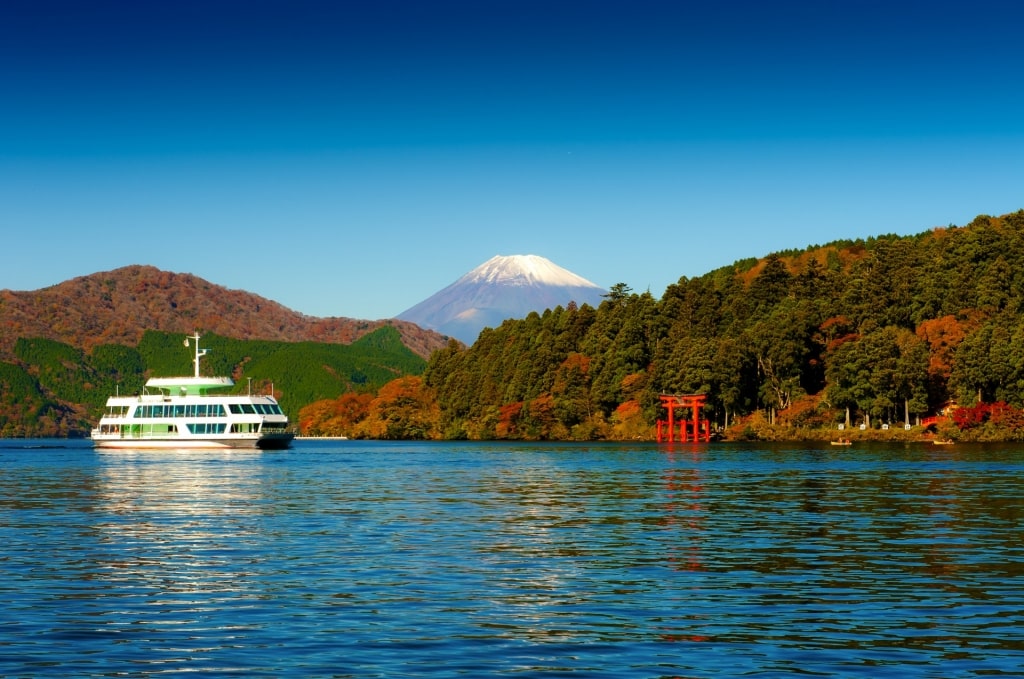
Lake Ashi, Japan
Ashinoko (“Lake Ashi”) is not only beautiful in itself, a gem within Fuji-Hakone-Izu National Park. It is also a perfect place to see the reflection of lovely Mount Fuji.
A popular day trip from Tokyo, the lake is within the crater of Mount Hakone. Fortunately, the volcano last erupted 1,000 years ago, but you can still find some incredible hot springs here.
Besides the view of Mount Fuji, photographers love the red torii gate that stands in the lake. It’s one of the most historic and beautiful in Japan.
Lake Rotorua, New Zealand
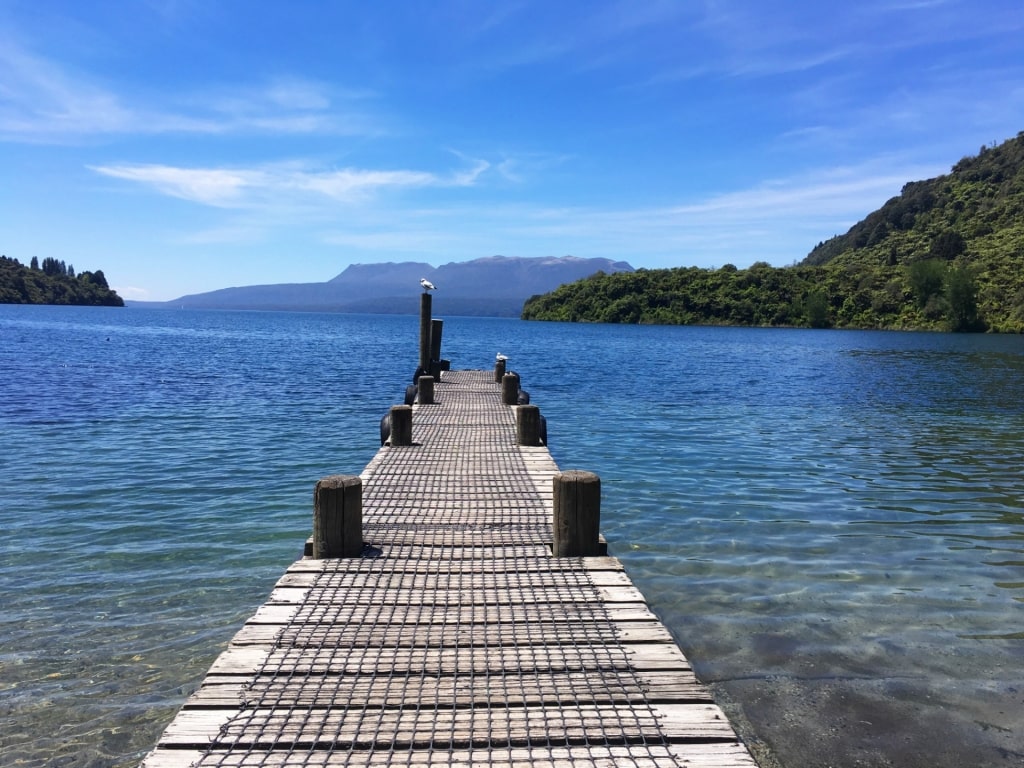
Lake Rotorua, New Zealand
The result of a long-ago volcanic eruption in New Zealand’s North Island, Lake Rotorua’s beauty is still enhanced by wafting clouds of steam and water colored by sulfur.
In the center of the lake is picturesque Mokoia Island, the setting for a Maori legend about star-crossed lovers. Usually, the story of the chieftain’s daughter Hinemoa and lowly Tutanekai actually has a happy ending.
You can soak in a hot pool named for Hinemoa on the island to hear the tale. Or just take a boat tour to enjoy one of the most beautiful places in New Zealand, with its clear waters, surrounded by mountains and forest.
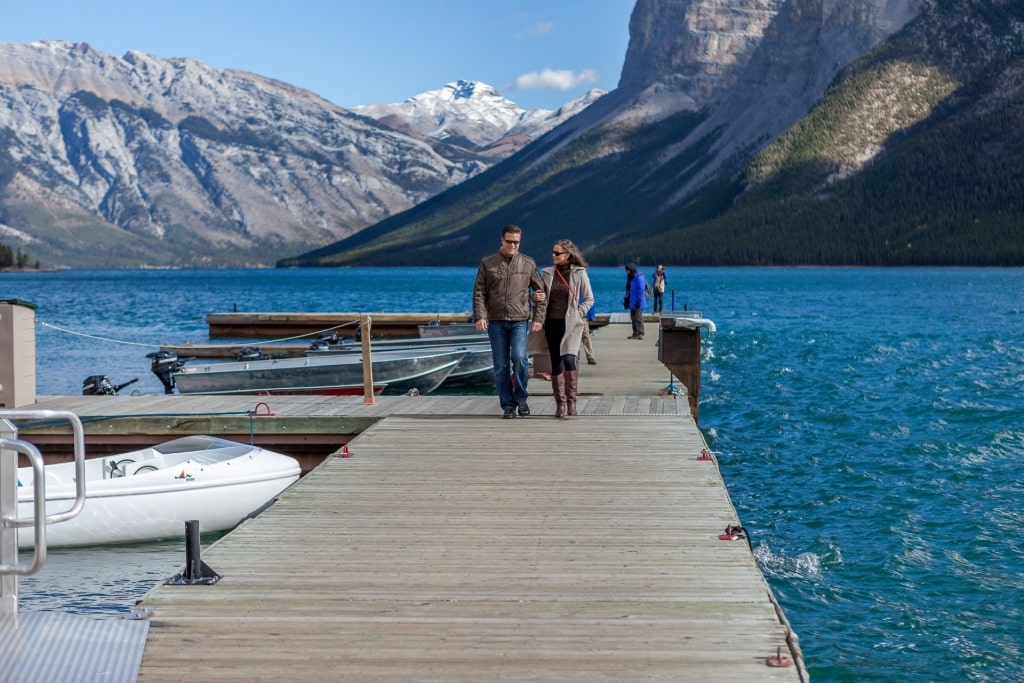
Lake Minnewanka in Banff, Canada
Has this list of the most beautiful lakes in the world inspired you to visit some—or all? Then browse our worldwide itineraries to find the perfect cruise to carry you away on your quest.
